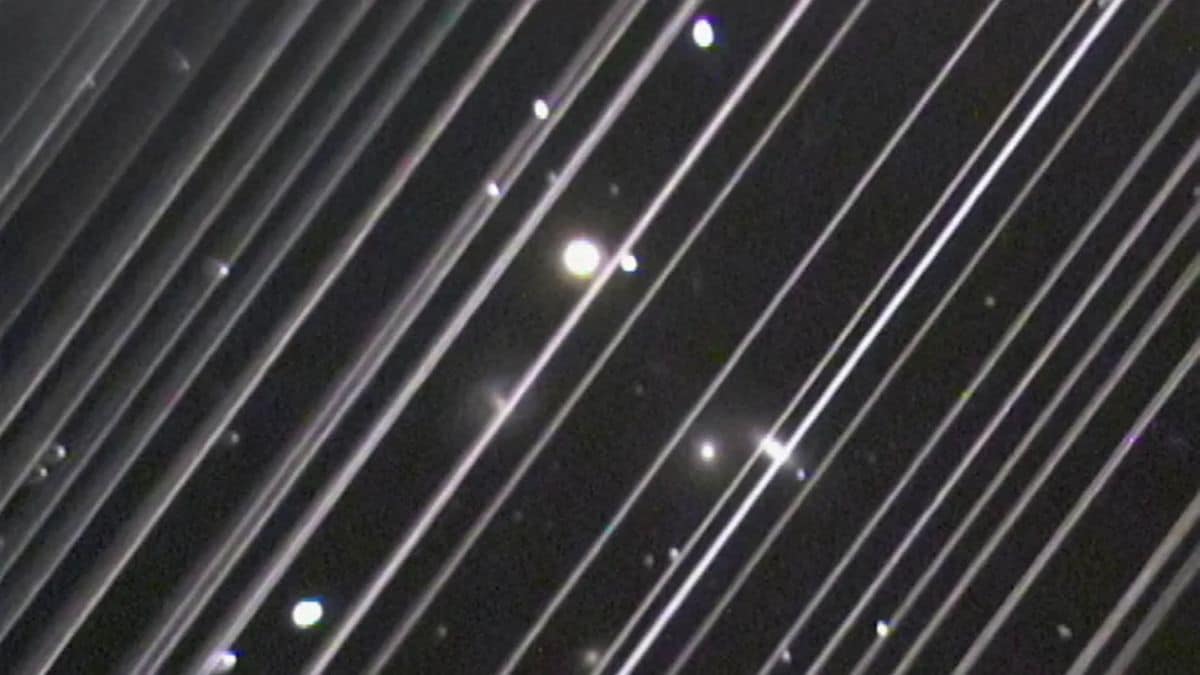Starlink’s Unintended Signals Threaten Astronomical Research, Study Finds

Astronomers have concerns over SpaceX’s Starlink connection, as the world is interlinked by the Starlink internet service, but there are big concerns about it. The satellite is interfering with the universe’s observation, and these fears have been confirmed by Curtin University. As per the analysis of 76 million images from the prototype station, it was found that the Starlink satellite emissions affect up to 30 percent images in some datasets. This kind of interference could change the outcome of the research that depends on that data.
As per NASA, it was found that from 1,806 Starlink satellites, there occurred 112,000 radio emissions. Further, it was observed that much of the interference is not deliberate. Some satellites detected emitting data in bands in which no signals are present at all. This includes 703 satellites that were identified at 150.8 MHz. This is meant to be protected for radio astronomy, as said by study lead Dylan Grigg.
Grigg observed that these unintended emissions might have come from onboard electronics. Astronomers can’t easily predict or filter these out as they are not part of the intentional signal. The International Telecommunication Union regulate the satellite emissions for protecting astronomical observations, current rules, and focuses on the intentional transmissions and does not address these unintended emissions, as said by Steven Tingay. Executive director of the Curtin Institute of Radio Astronomy.
The problem is not just the Starlink Satellite; the team found that it currently has the most expansive constellation, including around 7,000 satellites, which can be deployed during the survey. However, the satellite network can release non-deliberate transmissions too.
Tingay said that it is crucial to note that Starlink is not disturbing the current regulations, so there is nothing wrong with it. He further added that we hope this study adds support for the international efforts and updates the policies which control the impact of this technology on the radio astronomy that is currently going on.